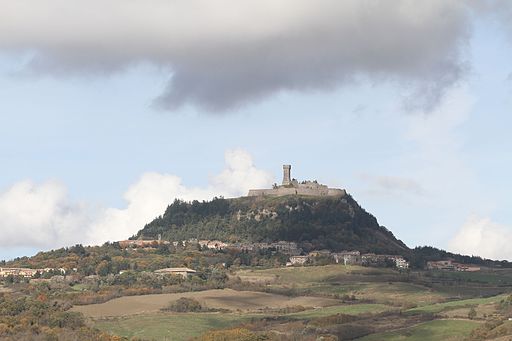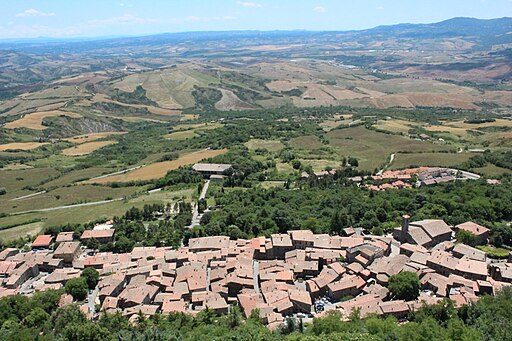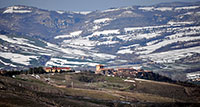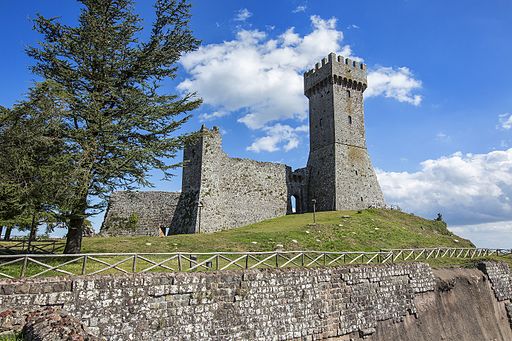Radicofani | Byways in southern Tuscany (1919)Fontana Medicea |
La Fontana Medicea fatta costruire dal Granduca Ferdinando I dei Medici nel 1603 per i bisogni dei viandanti di fronte alla grandiosa Posta. Di gusto manieristico, sopra la fontana riporta un cartiglio che spiega il motivo della sua costruzione, sopra ancora le statue di due angeli in travertino che sorreggono un grande stemma medico. La fontana utilizzava l'acqua della vicina sorgente di Fonte Grande, portata appositamente con un condotto, nel retro della fontana due piccoli ambienti ad uso lavatoi per i servizi della Posta.
|
Mappa Radicofani | Ingrandire mappa
|
 |
 |
|||
| Radicofani, panorama | Radicofani e la Val d'Orcia
|
Val d'Orcia album
|
||
 |
 |
 |
||
| Radicofani - Veduta dalla rocca | Radicofani - Veduta dalla rocca
|
Contignano, vista del paese e della Val d'Orcia imbiancata | ||
 |
 |
 |
||
Radicofani - Crete Senesi, veduta dalla Rocca di Radicofani
|
Radicofani - Chiesa di San Pietro | Radicofani - Chiesa di San Pietro | ||
 |
 |
 |
||
Radicofani, Pieve di San Pietro veduta dalla Rocca
|
Radicofani, mastio della Rocca | Radicofani, entrata e mastio della Rocca | ||
 |
 |
 |
||
Radicofani, Fortezza
|
Porta della Fortezza | The castle at sunset - the tower | Il Mastio della Fortezza di Radicofani | ||
 |
 |
 |
||
Contignano (Radicofani): vista del paese e della Val d'Orcia
|
Contignano (Radicofani), piazza | Contignano (Radicofani), Chiesa Santa Maria Assunta | ||
Katharine Hooker, Byways in southern Tuscany, 1919 (1910s) Text Appearing Before Image:
Text Appearing After Image:
|
||||
[1] Questa immagine è stata prelevata dal sito web The Commons di Flickr.
|
||||
| Cinigiano. Tuscany is celebrated for its beauty and its magnificent light. This is a view on the valley below Podere Santa Pia, characterized by all the elementts of the Tuscany landscape: vineyards, pastures, wheat fields and olive groves. #travelingintuscany#poderesantapia | ||||

